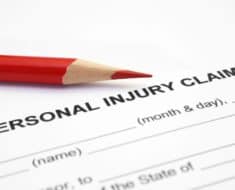
The internet has been a boon to scholars and students, making available information that just ten years ago was difficult find or even totally inaccessible. However, the internet has made it easier than ever for unwary students to encounter web-based sources that present incomplete, misleading, or even wrong information. As a result, essay writing in the digital age has become an exercise in judgment, leaving students to wonder how to tell what sources to trust when researching on the web. That’s why you need to be aware of the top three dangers of web sources.
Danger #1 – False Information
Perhaps the most famous example of web-based research dangers is Wikipedia, the free encyclopedia that many students rely on as their first line of research. According to Wikipedia, a number of surprising facts are “true”:
- David Beckham played soccer in China in the 1700s
- Singer Robbie Williams earns millions of dollars eating hamsters
- Borat was president of Kazakhstan in the mid-2000s
Not one of these “facts” is actually true, but all of them have appeared on Wikipedia alongside real historical information. Because Wikipedia allows any user to edit its pages, information on the site is constantly changing and sometimes very wrong.
Unwary students around the world have been fooled more than once into including Wikipedia claims in their essays because they haven’t learned the most important rule of internet research: Verify information.
To verify information, you need to look for confirmation that a fact is true in a second, independent source. This means that if you read something in Wikipedia, you should confirm that it’s true in another source like a book, an academic journal article, or a reputable scholarly website. And other websites that reuse Wikipedia content are not good sources for confirmation because they are presenting the same information you just read on a different site.
If you read a fact in two different sources, it is more likely to be true than if you only see it once. If you see it in three places, it is very likely true.

Danger #2 – Biased or Incomplete Information
However, false statements aren’t the only danger of using online sources. Another problem that students encounter is bias in online sources. Many websites and web-based articles are written by advocates who have strong points of view. This in itself is not a bad thing, but students need to learn to recognize the difference between scholarly research articles and one-sided articles designed to promote a particular point of view.
To do this, it’s important to think about a few questions:
- Is the author a professor or journalist, or is the author affiliated with an advocacy group or partisan cause?
- Is the website from a well-known media organization or university, or is it a personal website or the website of an advocacy group?
- Does the article contain verifiable information, or is it a collection of opinions?
Being able to judge between professional, reputable, and verifiable articles and those that are not is an essential skill for writing essays in the digital age. In general (but not always), scholarly articles from university or academic journal sites (.edu sites) are the most reliable, followed by professional journalists from well-known media organizations and service like write essays for money. Near the bottom of the list are advocacy sites, followed at the very bottom by personal websites, which can feature anonymous, unverified, articles with few facts and many unsupported opinions.
There are many good guides online to learning how to judge whether a source is credible, and your school library likely has resources to help you as well. It’s a great idea to take advantage of these resources and learn what makes a source credible so you can use the best quality materials in your own essays.
Danger #3 – Plagiarism
A third danger of internet research is plagiarism, which is the use of others’ words, ideas, or information without proper attribution and documentation. Every school has an official plagiarism policy, and you should be sure to consult your school’s plagiarism policy for more information about your school’s specific requirements. Plagiarism can result in failed assignments, failed classes, and even expulsion in the worst case scenario.
When you use the internet to do research, it is very tempting to use the copy and paste function to add your research to your paper. This makes it exceptionally easy to forget to put “quotation marks” around borrowed words, or to add proper documentation to your quotations.
Sometimes, students try to paraphrase by copying material from the internet and then changing words one by one when they are in the paper so that the text looks different. This is still plagiarism, even if you change the words and even if you add a citation. A true paraphrase must use completely different sentence structure and syntax, something the find-and-replace method can’t do.
Ultimately, the best policy is to write out paraphrases and even quotations by typing them yourself instead of relying on copy-and-paste. This will force you to be more careful about sources, and you’ll have a better change of avoiding accidental plagiarism. Always check plagiarism by using a plagiarism checker.









































